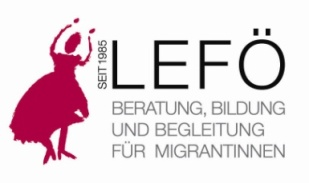
„No one shall be subjected to torture or to cruel,
inhuman or degrading treatment or punishment.”
Endangered Groups
- Young people, receiving child protection services, after leaving the system of government-run child-rearing facilities
- Young girls and women
- Peoples suffering from some mental disorder or psychiatric disease
- Several kinds of deviant groups (e.g. drug addicts)
- Homeless people
- People with disabilities
- Elderly people living alone on a low pension
- People living under the subsistence level
- Permanently unemployed people
The Victim
Victims of human trafficking are traumatized people. They are in dread of their captors and this influences their actions and decisions to a great degree. They often make up their minds to escape or ask for help, but they are afraid of revenge and retribution so much that they do not actually perform their plan. This is also the reason for the frequent scenario that after escaping or somehow becoming free again and reporting the case to the authorities, they withdraw their report.
As a consequence of the trauma suffered, the victims’ perception of the world changes: they no longer trust people, they behave in a distrustful way with everyone in order to defend themselves.
The victims’ recollection of what they had gone through is not present in their memory as a coherent chain of events but piece-by-piece, in a fragmentary form, and for this reason, further images keep emerging in their minds from time to time. This is not to be interpreted therefore as something casting doubt on their credibility.
They usually divide people into two groups: those who can be trusted, and those who cannot. However, they can very quickly re-classify even those they had trusted before as people who are not to be trusted. No more than a trifle perceived as an offence is enough for this to happen. For example, if the victim feels he is not believed, supported or what happened to him is being belittled. It is a characteristic trait of victims that they are afraid of every kind of change because changes always imply insecurity. For this reason, it may happen that a victim does not escape even when he has the possibility, because he opts for the familiar evil instead of insecurity.
In most cases, people become victims in hopes of finding work

Traffickers entice their victims to themselves with promises, a display of love and gifts. This is how they establish trust. Many victims are deceived by the promise of love and of belonging to a family. The perpetrators later come up with different kinds of requests, and if the victim does not comply with them of his own accord, threats, abuses sexual violence, blackmailing (with debts, with threats to harm family members, children etc.) come into play.
Another frequently applied method is making victims addicted to narcotics, thus chaining them to themselves in a relationship of dependence.
A Feeling of Shame
Victims are often ashamed of having gotten into a humiliating situation. Consequently, they are afraid of asking for help, or they may not even know there is any help available for them. They are not aware of being victims of a crime.
A characteristic trait of victims is that they are people in a vulnerable situation with very little or no supportive ties from family or friends. In many cases, they had even previously lived in an abusive environment, so they are accustomed to distress and suffering, and that’s what they keep adapting to.





